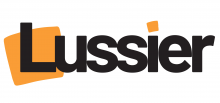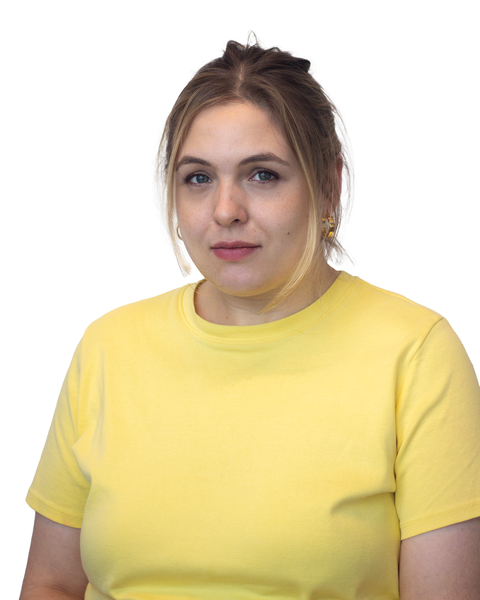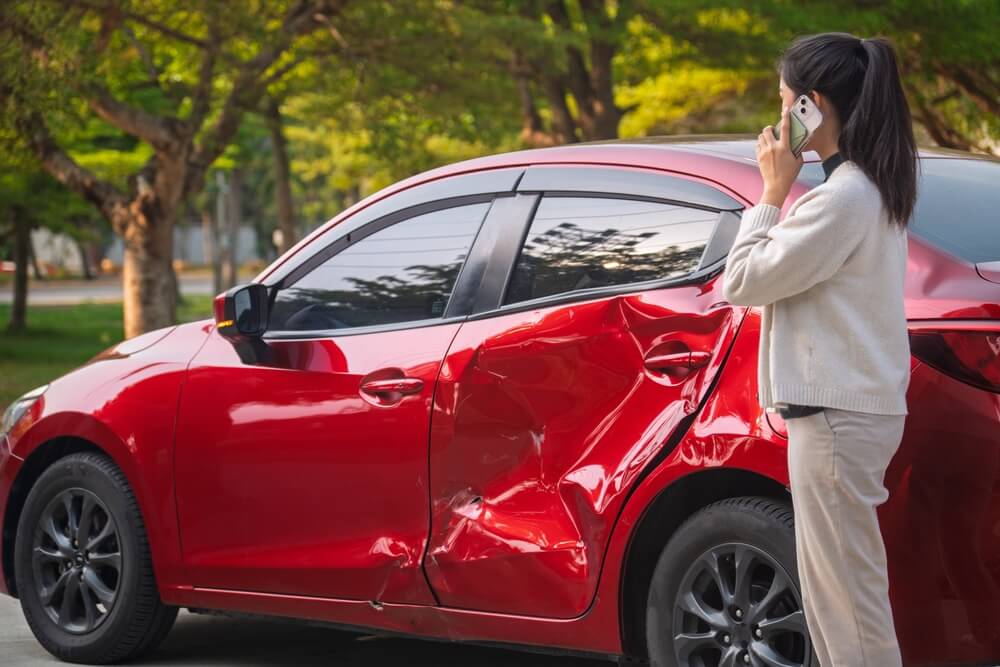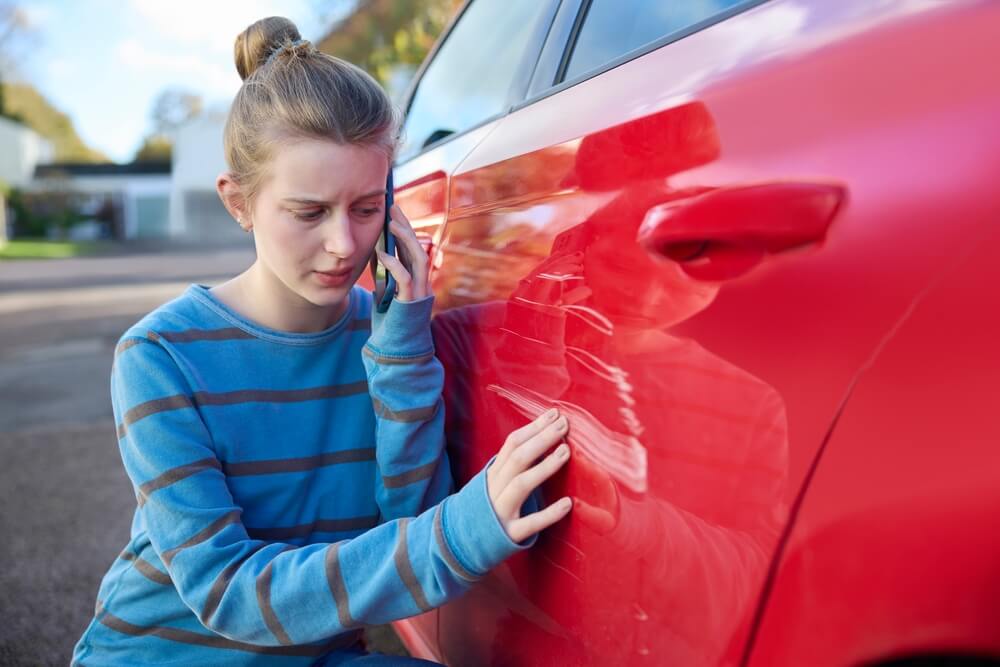Cheap Calgary Car Insurance Quotes
Calgary drivers can save hundreds on average by comparing auto insurance quotes on Rates.ca.
Compare Calgary car insurance quotes from top providers

On this page:
- Car insurance in Calgary
- Best car insurance companies in Calgary 2025
- How does car insurance work in Calgary?
- Mandatory car insurance coverage in Calgary
- How car insurance rates are set in Calgary
- Factors in Calgary that affect your car insurance premium
- Recent Calgary auto insurance quotes
- How to get Calgary auto insurance quotes on Rates.ca
- What is the average cost of car insurance in Calgary?
- How does Calgary’s average car insurance rate compare to other cities in Alberta?
- Calgary car insurance rates by postal code
- Which Calgary neighbourhood has the cheapest car insurance?
- Which companies offer car insurance quotes to Calgary drivers?
- How to get the cheapest car insurance in Calgary
- Frequently asked questions about Calgary car insurance
Car insurance in Calgary
Car insurance is mandatory throughout Canada, and Calgary is no exception. In fact, you're not even allowed to buy license plates without proof of insurance. Insurance covers the cost of damage and injuries sustained in an accident.
How does car insurance work in Calgary?
Alberta has a private auto insurance system. In basic terms, it means drivers buy their coverage from insurance companies. In some places in Canada, drivers get insurance from a Crown corporation, which is also usually the sole provider of car insurance in the province.
Alberta's auto insurance system has two other defining characteristics:
- Your own insurance company will pay to repair or replace your car if you're not at fault for an accident,
- And it will pay for your medical care, regardless of fault.
The intention behind this recently enacted change is to create a more efficient process to resolve auto insurance claims. These efficiencies will benefit consumers' wallets, too. Lower legal expenses mean insurance companies can charge Albertans less for coverage.
The Automobile Insurance Rate Board (AIRB) is a provincial body that establishes guidelines on how insurance companies can rate consumers. Insurance ratings determine how much the company charges a driver for coverage.
AIRB has another tool to regulate insurance prices: the Grid. The Grid outlines the most a company can charge for basic insurance coverage. You may move up or down the Grid depending on your driving history. The rules state that your insurance premium cannot exceed the maximum price for someone with your driving history.
Best car insurance companies in Calgary 2025
Finding a good price for insurance coverage matters more than ever. But it’s probably not the only factor you care about when you’re shopping for car insurance. For example, knowing that the provider you choose has a track record of being there for policyholders when they need them is important – and that’s hard to judge based on price tag alone.
To find out which insurance companies offer policyholders the most value for their premiums, we turned to the experts: drivers like you.
We collected the opinions of 12,600 drivers in Alberta and Ontario for the second installment of the Rates.ca Annual Best Auto Insurance Study. Below, you’ll find which companies received the highest marks across categories that included convenience, customer service, and claims resolution. To learn more about how we ranked insurers, check out the survey's methodology.
Rates.ca Annual Best Auto Insurance Study 2025

Awards



CAA Insurance: WINNER
About
CAA Insurance is the best overall insurance company, say Canadian drivers surveyed by Rates.ca. It excels in trustworthiness, policy documents, and ease of claims filing.
Drivers see CAA as offering the lowest rates and best value for money. Customers also like its suite of innovative products and for having coverage that fits their needs.
It's the second year in a row that CAA has earned platinum distinctions.
Pros
- Rated highest in overall satisfaction by current customers.
- Most affordable premiums, according to customers.
- Coverage provides good value in return for premiums, customers also say.
- Rated highly for its innovative products and coverage options.
- Market leader in issuing policy documents and billing statements that are easy to understand.

Awards



Gore Mutual
About
Gore Mutual has emerged as one of the study's best rated insurance companies, achieving some of the highest satisfaction ratings among Canadians surveyed.
Gore scores highly in all areas of service. Customers say that policy documents and billing statements are clear and easy to understand, and that the website is user-friendly.
Gore policyholders are more likely to file a claim online than clients of other insurance companies.
Pros
- Won Gold in trustworthiness, best policy documents, and best billing statements
- Ranks highly for innovation; customers rate Gore's website positively, and most file claims by email
- Gore excels in all areas of service and are seen to offer products that meets customers' needs
- Scores highly for quality of policy documents

Awards



Intact Insurance
About
Intact Insurance rates consistently well in all categories, placing third overall. They also placed third in categories of Most Trustworthy, Best Auto Claims Experience, and Best Billing Documents.
Customers with Intact are most likely to contact the insurance broker first to open a claim and were much more likely to use Intact's online app compared to other carriers. They were also more likely to receive policy documents electronically.
Pros
- Customers are likely to say that Intact is a trustworthy brand.
- Intact scores high for its claims service, with more customers likely to file a claim via online app than other carriers.
- Intact customers are also more likely to receive status updates on their claims by telephone; in general, customers with Intact had higher than average contact with the insurer than other companies.
Mandatory and optional car insurance coverage in Calgary
There are three categories of car insurance coverages in Alberta: mandatory, optional, and endorsements.
Mandatory coverage is the bare minimum amount of insurance you must hold to drive a car legally in Alberta.
Optional coverage refers to add-ons you can purchase that broaden your base policy.
Endorsements are a form of optional coverage — with a twist. Endorsements, also known as standard endorsement forms, are special agreements. They allow you to change, add, or reduce the amount of coverage outlined in your policy.
Insurance coverage | Category | Description |
|---|---|---|
Mandatory | This coverage provides financial aid when you're at fault for an accident. Your insurance pays for bodily injury and property damage you cause to another person and any legal expenses you may incur. The minimum you're required to carry is $200,000. This means your insurance company will pay for expenses up to $200,000. Experts often recommend that policyholders increase their coverage to at least $1 million. The liability part of your insurance contract will pay for: - Medical costs for anyone you've injured - The cost to repair or replace another person's property - Legal fees that stem from the accident and finally - Damages to the injured parties. | |
Mandatory | This part of your policy covers costs when you or a passenger are in an accident and need medical care. Accident benefits also provide compensation for: - Lost wages - Funeral expenses - Surviving spouses and dependents. | |
Mandatory | This covers the cost of repairing or replacing your car after you're in a collision you did not cause. If you are 100% not at fault, DCPD will cover 100% of your costs. It's possible to be partially at fault for causing an accident. In this scenario, you'll still receive compensation from DCPD, but it will be a reduced amount. For example, if you're 50% responsible, you'll only receive 50% of your benefit. DCPD has no deductible and filing a claim won't affect your premium in the future. (You can opt to purchase a deductible — this will reduce your premium slightly.) | |
Optional | This helps pay for repairs if you collide with another vehicle or crash into a stationary object. Collision coverage will pay to repair your car if you're at fault for an accident. | |
Optional | This helps pay for repairs if an event other than a collision damages your car (e.g., vandalism or adverse weather). Calgary sits in Alberta's Hailstorm Alley, making it prone to severe summer storms. Hail causes millions of dollars in damage to vehicles each year. Comprehensive insurance will cover this peril. | |
Optional | This is a cheaper option than comprehensive. It only protects against the perils listed in your policy. | |
Endorsement | This limits a vehicle's glass coverage for a reduced premium. | |
Endorsement | If your car is unusable, this endorsement will pay for temporary transportation. You can use the money for taxis and public transit up to a limit. | |
Legal Liability for Damage to Non-Owned Automobiles (SEF 27) | Endorsement | This extends your physical damage insurance to a rental vehicle. |
Endorsement | If you are found responsible for causing an accident, this endorsement prevents your premium from rising. It only applies to scenarios that your insurance company agreed in advance to cover. | |
Endorsement | This endorsement prevents the insurance company from factoring in depreciation when calculating a claim payout. For this endorsement to apply, the damage needs to be caused by an insured event. | |
Endorsement | This is excess coverage for accidents that involve an underinsured driver. This endorsement will cover the total cost of a claim. |
How car insurance rates are set in Calgary
These are the steps Alberta insurance companies follow to calculate your rate:
#1 - Insurance companies figure out the base premium to charge all customers.
The base premium is the average amount needed from each customer to ensure the company can pay claims and bills and extract a reasonable profit.
#2 - They use rating factors to determine the amount of risk you present as a driver.
Doing this changes the base premium. Your insurance company will rate you based on:
- The number of years you've held a license,
- The number of traffic convictions you've had,
- The number of accidents you've had,
- Whether you've had driver training from an accredited school,
- And finally, where you live.
If you live in a city, your premium will likely be higher than someone living in the country. There are more vehicles on the road, which means more accidents. Theft, vandalism, and insurance fraud tends to happen more frequently in cities.
#3 - They assess your car.
The make and model year affects a part of your premium. Why? Insurance companies have to consider how much it could cost to repair or replace your car. For more recent models, premiums tend to be higher than cars older than three years. The older the vehicle, the more you stand to save on insurance. Cars with better safety and handling characteristics are sometimes more affordable to insure. However, many vehicles with superior safety features have built-in sensors to detect danger, making them costly to fix. This means, paradoxically, that you might not reap savings on your insurance by picking the safest car on the market.
The most common causes of a price increase can be split into two categories: the factors you can control and those you can't.
Factors you can control:
- You cause an accident. Your premium will go up at renewal. You may even have to file a claim to have your car's computer system fixed. Because you were at fault, this, too, will cause your premium to increase.
- You move neighbourhoods. Your postal code affects your car insurance rate. Some areas are riskier than others.
- You change your car. The type of vehicle (its year, make, and model) will influence the premium. If you finance your vehicle, you'll likely need to add collision and comprehensive to your policy.
Factors you can't control:
- An increasing number of serious claims. According to the Automobile Insurance Rate Board, the average claim has more than doubled since 2005.
- Distracted driving is now outpacing impaired driving. It's now the leading cause of accidents and death in the province.
- Newer cars cost more to repair. Even affordable brands are outfitting cars with complex computer systems.
- Severe weather. Drivers are filing more claims due to events like hail, flooding, and wildfires.
- Vehicle theft is on the rise in Alberta. The province accounts for 29% of all vehicle thefts in Canada.
- The increasing cost of medical care. An aging population and inflation are major drivers.
Recent Calgary car insurance quotes
Recent auto Insurance Quote from Calgary, Alberta
Female, 32 years old
2016 NISSAN MURANO SL 4DR AWD
July 23, 2025
Cheapest Quote
$ 370 / month
$ 4,440 / yearAverage Quote
$ 860 / month
$ 10,322 / yearSavings
$ 490 / month
$ 5,882 / year
57 %
Recent auto Insurance Quote from Calgary, Alberta
Male, 45 years old
2014 AUDI S4 3.0T QUATTRO 4DR
July 23, 2025
Cheapest Quote
$ 174 / month
$ 2,090 / yearAverage Quote
$ 217 / month
$ 2,608 / yearSavings
$ 43 / month
$ 518 / year
20 %
Recent auto Insurance Quote from Calgary, Alberta
Male, 23 years old
2022 GMC TERRAIN SLT 4DR AWD
July 23, 2025
Cheapest Quote
$ 622 / month
$ 7,459 / yearAverage Quote
$ 1,296 / month
$ 15,547 / yearSavings
$ 674 / month
$ 8,088 / year
52 %
Auto insurance quotes are compared from CAA, Coachman Insurance Company, Echelon Insurance, Economical Insurance, Gore Mutual, Pafco, Pembridge, SGI, Travelers, Zenith Insurance Company
How to get Calgary car insurance quotes on Rates.ca
Ready to compare quotes and save?
Tell us about your vehicle
Answer a few basic questions about your driving & car insurance history.
Compare your quotes
See quotes from multiple top insurance companies side by side.
Choose the right coverage
Find the right protection for your vehicle.
Secure your rate
Connect with the provider and secure your rate.
What people say about our quotes

Based on 6,451 reviews

Was easy to apply and didn't take long
Was easy to apply and didn't take long. Prices were amazing as well. Received an email confirmation immediately after applying for.
Shaun

Fast efficient and fair
Quick quotes. Great rates. Easy to process
Trinity

Comparing Travel Insurance …
This was the only site I could find that allowed me to compare different travel insurance options. I particularly liked the ability to look at sample documents.
Toronto

Amazing
Very helpful and easy to use
Safe travels

Easy quick selection of rates
Easy quick selection of rates
J K

Great help in finding the best rate!
Great help in finding the best rate! Thanks a lot!
Ruthielyn opina
What is the average cost of car insurance in Calgary?
The average car insurance premium in Calgary is roughly $2,230* per year, according to Rates.ca data. The Calgary average is approximately 12% higher than the overall Alberta average of $1,991* annually.
Urban drivers pay more for insurance is that they're more likely to experience risks such as:
- Theft. More cars present means more vehicle theft. Car theft claims in Calgary totalled $33 million in 2023, according to the Insurance Bureau of Canada (IBC). Nationally, theft claims surpassed $1 billion. The same year, 4,898 cars were stolen in Calgary, according to local police data.
- Collisions. More cars lead to more accidents, which result in claims. Car accidents are at a five-year high, according to Calgary police. In 2023, Calgary recorded 2,633 collisions that resulted in serious injury. Alberta is also second for largest claims size, with the average insurance claim amounting to $14,287, according to the IBC. (Ontario, which leads in claims costs, is only 5% higher).
- Increased costs. Inflation combined with a worldwide shortage of cars, car parts, and labour, have pushed up operating costs for insurance companies.
- Insurance fraud. Staged accidents are more likely to occur in wealthy urban neighbourhoods.
However, the Alberta government has identified personal injury costs as the single greatest contributor to rising car insurance premiums in the province. The government is currently exploring legislative reforms to help bring down costs. It has already introduced new regulations to combat ballooning rates, including making direct compensation property damage (DCPD) coverage mandatory and capping auto insurance rate increases for good drivers.
How does Calgary’s average car insurance rate compare to other cities in Alberta?
Drivers in large cities pay the most for insurance in Alberta, the data show. To do a fair comparison between cities, we used the same driver profile* to generate quotes for each city.
| City | Geographic designation/population size | Premium |
|---|---|---|
| Calgary | Large urban / 1,372,178 | $2230 |
| Edmonton | Large urban / 1,057,181 | $2124 |
| Airdrie | Medium / 77,027 | $2000 |
| Llyodminster | Medium / 20,204 | $1849 |
| Okotoks | Medium / 31,413 | $1849 |
| Grande Prairie | Medium / 67,627 | $1806 |
| Lethbridge | Medium / 101,799 | $1780 |
| Stony Plain | Small / 18,371 | $1724 |
| Morinville | Small / 10,442 | $1724 |
| Medicine Hat | Medium /65,203 | $1722 |
| Red Deer | Medium / 104,392 | $1712 |
| Sylvan lake | Small / 16,354 | $1712 |
Estimates from Rates.ca suggest that a driver in Sylvan Lake (population of roughly 16,000) pays 23% less than a Calgary driver of the same age ($2,230 per year). Calgary has the highest car insurance rates in the entire province. It is also Alberta’s largest city by population, now surpassing 1.6 million as of 2023 thanks to international as well as interprovincial migration. Population size and auto insurance rates are correlated; there are more incidences of collision, injury, and theft in big cities.
Calgary, in particular, files a higher number of claims related to auto theft compared to other urban centers in the province. Calgary drivers filed $33 million in theft claims in 2023, according to the Insurance Bureau of Canada. By comparison, Medicine Hat only reported $672,398. Though car thefts are not at the crisis levels observed in the Greater Toronto Area, thefts still result in claims, which means insurance companies maintain higher rates to cover costs.
Collisions tend to be fatal more often in rural areas versus in cities (910 rural incidences compared to 800 urban ones, according to 2022 statistics from Transport Canada). However, the number of non-life-threatening collisions occurring on city roads results in far more claims. According to Transport Canada, there were 65,061 crashes resulting in personal injuries in cities — 191% more than in rural areas, according to the National Collision Database. This is a major reason that rates are higher for city dwellers.
Calgary car insurance rates by postal code
The average premiums below are represent the lowest quote offered to our driver persona*. Your premium might be different. Comparing quotes is the best way to find out if you could pay less for insurance.
Find your forward sortation area (the first three letters of your postal code) and see what the average premium is for your neighbourhood.
| Forward sortation area (FSA) | Neighbourhoods in coverage area | Annual Premium |
|---|---|---|
| T3Z | Northwest Calgary, Southeast Calgary, Southwest Calgary | $1,849 |
| T3M | Auburn Bay, Cranston, Mahogany, Seton, Southeast Calgary | $1,948 |
| T3A | Brentwood, Dalhousie, Edgemont, Hamptons, Hidden Valley, Northwest Calgary | $1,948 |
| T2Y | Bridlewood, Evergreen, Millrise, Shawnee Slopes, Shawnessy, Somerset, Southwest Calgary | $1,948 |
| T3S | Copperfield, Southeast Calgary | $2,000 |
| T3R | Nolan Hill, Northwest Calgary, Royal Vista | $2,140 |
| T3L | Northwest Calgary, Tuscany | $2,140 |
| T3H | Aspen Woods, Cougar Ridge, Discovery Ridge, Patterson, Signal Hill, Southwest Calgary | $2,140 |
| T3G | Arbour Lake, Citadel, Hawkwood, Northwest Calgary | $2,140 |
| T3E | Currie Barracks, Glamorgan, Glenbrook, Glendale, Killarney, Lakeview, Lincoln Park, North Glenmore, Richmond, Rutland Park, Southwest Calgary | $2,140 |
| T3C | Beltline, Rosscarrock, Southwest Calgary | $2,140 |
| T3B | Bowness, Montgomery, Northwest Calgary, Southwest Calgary | $2,140 |
| T2W | Braeside, Canyon Meadows, Cedarbrae, Southwest Calgary | $2,140 |
| T2V | Eagle Ridge, Haysboro, Kelvin Grove, Kingsland, Oakridge, Palliser, Southwest Calgary | $2,140 |
| T2N | Hillhurst, Hounsfield Heights - Briar Hill, Northwest Calgary | $2,140 |
| T2L | Brentwood, Charleswood, Collingwood, Northwest Calgary | $2,140 |
| T3P | Evanston, Northwest Calgary | $2,239 |
| T3K | Beddington Heights, Country Hills, Country Hills Village, Coventry Hills, Harvest Hills, Northeast Calgary, Northwest Calgary | $2,239 |
| T2Z | Copperfield, Douglasdale, McKenzie Lake, McKenzie Towne, New Brighton, Southeast Calgary | $2,239 |
| T2X | Chaparral, Midnapore, Silverado, Southeast Calgary | $2,239 |
| T2T | Altadore, Bankview, Beltline, Lower Mount Royal, Richmond, South Calgary, Southwest Calgary | $2,239 |
| T2S | Beltline, Britannia, Cliff Bungalow, Mission, Southwest Calgary | $2,239 |
| T2R | Beltline | $2,239 |
| T2P | Downtown, Downtown Calgary | $2,239 |
| T2M | Banff Trail, Capitol Hill, Crescent Heights, Mount Pleasant, Northeast Calgary, Northwest Calgary | $2,239 |
| T2K | Cambrian Heights, Highland Park, Highwood, Huntington Hills, North Haven, Northwest Calgary, Thorncliffe | $2,239 |
| T2J | Acadia, Deer Ridge, Haysboro, Lake Bonavista, Queensland, Southeast Calgary, Willow Park | $2,239 |
| T2H | Acadia, Alyth - Bonnybrook - Manchester, Fairview, Kingsland, Meadowlark Park, Southeast Calgary, Southwest Calgary | $2,239 |
| T2G | Alyth - Bonnybrook - Manchester, Beltline, Downtown, Inglewood/Southeast Calgary | $2,239 |
| T2E | Mayland Heights, Vista Heights, Bridgeland, Crescent Heights, Highland Park, Northeast Calgary, Calgary International Airport | $2,239 |
| T2C | Southeast Calgary | $2,239 |
| T2B | Southview | $2,636 |
| T2A | Marlborough, Forest Lawn-Forest Heights | $2,636 |
| T3N | Skyview Ranch, Northeast Calgary | $2,730 |
| T3J | Castleridge, Coral Springs, Falconridge, Martindale, Northeast Calgary | $2,730 |
| T1Y | Northeast Calgary, Sunridge, Temple, Pineridge | $2,730 |
Which Calgary neighbourhood has the cheapest car insurance?
The cheapest car insurance rates were found T3Z postal code area. It encompasses the districts of Northwest Calgary, Southeast Calgary, and Southwest Calgary. In these suburban, residential neighbourhoods, the average premium was $1,849 annually.
Car insurance tends to be less expensive in the suburbs – though not as cheap as it is in places outside the Calgary Region – for a variety of factors. Lower urban density in these areas decreases the chances of accidents, and reduced crime rates result in fewer cases of car theft and vandalism. Additionally, suburban driving patterns often involve more highway driving and less stop-and-go city traffic, which is typically safer and results in fewer claims. Furthermore, suburban homes usually have private driveways or garages, reducing the risk of damage compared to street parking in the city. All these elements contribute to lower insurance premiums for suburban residents.
Which companies offer car insurance quotes to Calgary drivers?
| Company | Company type | Phone | Address |
|---|---|---|---|
| Alberta Motor Association Insurance Company | Insurance company | Calgary Main: (403) 240-5300 | Calgary Main: 4700 17 Avenue SW T3E 0E3 |
| Aviva Canada Group | Insurance company | Calgary 403-750-0600 | Calgary 112-4th Avenue SW, Suite 2100 Calgary, AB T2P 0H3 |
| Economical Mutual Insurance Company | Insurance company | Calgary Phone: 403-265-8590 | CALGARY BRANCH 322 11th Avenue SW, Suite 700, Calgary AB T2R 0C5 |
| Insurance Hotline | Quotes comparison | 1 (855) 821-7312 | 225 King St W, Suite 1000, Toronto, ON, M5V 3M2 |
| Intact Insurance | Insurance company | 1(403) 269-7961 | 326 11 Ave SW, Calgary, AB T2R 0C5 |
| Johnson Insurance | Insurance company | 14033514233 | 326 11 Ave SW, Calgary, AB T2R 0C5 |
| LowestRates.ca | Quotes comparison | 1 (855) 487-6911 | 1910 Yonge St. Suite 401, Toronto, ON M4S 3B2 |
| Rates.ca | Quotes comparison | 1 (844) 726-0907 | 225 King St W, Suite 1000, Toronto, ON, M5V 3M2 |
| RSA Canada Group | Insurance company | Tel: 403-233-6000 | Alberta regional office: 300, 326 - 11 Avenue SW. Calgary, Alberta T2R 0C5 |
| Scoop Insurance | Insurance broker | 1-866-456-6620 | 300 Lincoln St. Unit 22, Welland, ON L3B 4N4 |
| Travelers | Insurance company | 403-231-6600 | 530 – 8th Avenue S.W., Suite 2700 Calgary, AB T2P 3S8 |
How to get the cheapest car insurance quotes in Calgary
#1 - Compare rates
This tactic is recommended by the Insurance Bureau of Canada, the Alberta Insurance Regulation Board, and the Financial Consumer Agency of Canada. Getting car insurance quotes from different insurance companies is the best way to find your lowest rate.
#2 - Compare insurance prices before buying a car
A car's make and model will impact insurance costs. Before you buy, make sure to research which cars are the cheapest to insure in Canada.
#3 - Try usage-based insurance
Usage-based insurance refers to telematics and pay-as-you-go insurance. Both are now available in Alberta.
With a telematics program, you agree to install a device that records your driving habits. You get a discount at renewal, but only if the device shows you to be a responsible driver. The device will record:
- The time of day you drive,
- Where you drive,
- The number of kilometres logged,
- Your speed,
- How fast you accelerate,
- How hard you brake,
- And how often you use your phone while driving.
Pay-as-you-go insurance also uses a device to record your driving patterns. You buy coverage for a set amount of kilometres (usually no more than 12,000 km a year). The device bills you for every 1,000 kilometres you go over.
#4 - Drop collision and comprehensive coverage on older cars
If you finance or lease a vehicle, collision and comprehensive are likely mandatory. If you own your car outright, you may want to consider dropping these collision and comprehensive coverages. It could be cheaper to pay for repairs yourself, especially if you drive an older car.
The following rules of thumb can help you decide whether to keep collision and comprehensive.
- Drop these covers if your car's value is approximately twice your insurance deductible.
- If the cost of collision and comprehensive coverage is more than 10% of your car's current value, drop them.
But before you cancel these add-ons, make sure you can handle the cost of repairing or replacing your car.
#5 - Increase your deductible
Your insurance company will generally make you share the cost of a claim with them. For example, your deductible on a $10,000 claim may be $1,000. If you offered to pay $2,000, your insurance company would lower your premium in return.
Make sure you're able to pay a higher deductible. Depending on your finances, paying a higher monthly premium may be worthwhile.
#6 - Be an all-star (driver, that is)
Insurance companies use a star rating to rank drivers. Your star rating is based on the number of years you’ve been licensed and claims-free. The more stars you have, the better. Some insurance companies award drivers up to six stars, others go all the way up to 20 — it’s different for each insurer.
#7 - Apply for as many discounts as you can
Bundling your insurance is the one most impactful ways to lower your premium. Bundling refers to buying car and home insurance from the same company. Lower premiums aren't the only benefit of bundling. If you need to claim your car and home at the same time, you'll only pay one deductible.
Here are some other discounts available to Alberta drivers:
- Driving school certificate insurance discounts,
- Increased deductible insurance discount,
- Telematics insurance discount,
- Discount for renewing with your insurance company,
- Seniors' car insurance discount,
- Multi-vehicle insurance discount,
- Discount for renewing your policy with your current insurance company,
- And discounts for installing an anti-theft device.
Wondering how these discounts stack? Insurance companies take the discounts you qualify for and arrange them from largest to smallest, applying each one to your rate in succession.
#8 - Consult an insurance professional
An insurance professional will identify coverage gaps and create an insurance plan. They can also suggest discounts not listed here.
Frequently asked questions about car insurance in Calgary
Why is Calgary car insurance so expensive?
As with most large cities, busy roads, distracted driving, and crime are responsible for high car insurance rates. Since the early 1990s, Calgary's population has expanded significantly, surpassing 1.6 million residents. Calgary is very much a driving city, so this population boom has translated into a dramatic increase in cars on the road. More cars on the road means more collisions which leads to higher auto insurance premiums.
Which company has the cheapest car insurance in Calgary?
No two drivers are the same and the quotes you receive will be equally unique. As a result, it is impossible to say which company offers the cheapest rate, which is why we recommend trying our free quoting tool.
Can I get month to month car insurance in Calgary?
The standard term for an insurance policy is one year.
It is possible to get insurance for six months, but few companies offer it in Alberta. It's even less likely you'll find an insurance company that offers one-month terms.
If your plans involve a vehicle that's only driven in the summer, you may want to consider seasonal insurance. Renting a car for a month might also be a suitable workaround.
Your broker or insurance agent might be able to tailor a solution to suit your needs. Try giving them a call.
How do I get car insurance as a new driver in Calgary?
Eager to zip up and down Calgary’s streets? To do it legally, you must first get insurance for your car.
There are a few routes you can take to get insurance.
Use a rates comparison site to get quotes from an array of companies.
The most efficient way to find the lowest rate is to compare offers from multiple insurance companies.
A rate comparison website will do this for you.
The Financial Consumer Agency of Canada and the Insurance Bureau of Canada recommend shopping around to find the best deal. The Automobile Insurance Rate Board recommends using Rates.ca to compare dozens of insurance companies within minutes.
Consult an insurance agent
Agents are dedicated to one company, so they can only show you products from their employer's range.
Suppose you already have a policy (tenant or home insurance, for example). In that case, you can speak to your current insurance provider about bundling it with an auto policy.
Bundling can help you save money on both products (companies provide discounts for the extra business). Bundling will also prevent the hassle of dealing with two separate companies.
The downside is that the company you choose may not offer you the best deal.
Even if you choose a brand out of familiarity, it's worthwhile to take a peek and see what other companies could do for you. Shopping around for quotes is fast and free.
Consult an insurance broker
A broker is an independent insurance professional. They have permission to sell products from multiple insurance providers. They also have a wealth of insurance knowledge to help guide you.
Brokers are eligible to receive a commission from the companies they advertise. However, the province regulates brokers to ensure they make recommendations based on the client's best interest.
Using a broker is better than choosing a company based on a brand name. But working with one has downsides.
No broker has the entire insurance market in their portfolio or access to all products.
It can be challenging to choose a broker unless you have a referral from a trusted source. There are so many of them, and there are no outward criteria to sort them by (other than advertisements).
They also charge fees for their services.
On the other hand, rate comparison sites rely on an algorithm to bring you a multitude of quotes in minutes for free.
Is ridesharing insurance available in Calgary?
Uber has had a topsy turvy ride in Calgary; it initially launched in 2015, before facing a court injunction and suspending operations, and was relaunched more successfully in 2016. Shortly afterwards, the Superintendent of Insurance of Alberta approved a new ridesharing insurance policy which came into effect on July 1, 2016.
If you are planning on driving for a ridesharing platform in Calgary, you must inform your insurance provider to modify your coverage.










